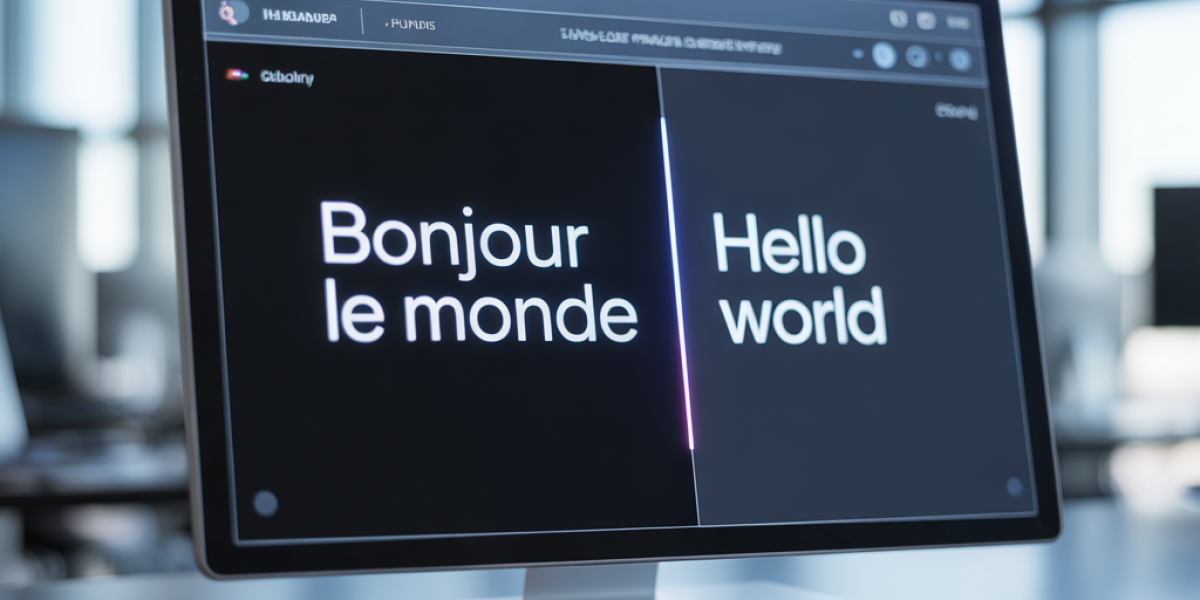In an era defined by rapid technological advancement, artificial intelligence (AI) and machine learning are transforming industries at an unprecedented pace. One of the most visible battlegrounds in this revolution is the field of translation. With tools like Google Translate, DeepL, and AI-powered language models achieving near-instantaneous translations across dozens of languages, many are asking: Are human translators becoming obsolete?
While machine translation (MT) has made remarkable strides, the debate between machine and human translation is not about replacement—it’s about collaboration, context, and the enduring value of human insight. In this powerful, in-depth article, we explore the strengths and limitations of both approaches, examine real-world implications, and answer the pressing question: Is the human role in translation truly at risk?
The Rise of Machine Translation
Machine translation has come a long way since its early, rule-based systems in the 1950s. Today’s AI-driven models—especially neural machine translation (NMT)—use deep learning algorithms trained on vast datasets of multilingual text. These systems can now produce translations that are often fluent, fast, and surprisingly accurate for general content.
Platforms like DeepL and Google Translate have become household names, used by millions daily for everything from casual conversations to business emails. For businesses, MT offers a cost-effective way to scale content across languages, localize websites quickly, and support global customer service.
Advantages of Machine Translation:
- Speed: Translates thousands of words in seconds
- Cost-Efficiency: Significantly cheaper than human translation
- Scalability: Ideal for large volumes of repetitive or technical content
- Accessibility: Makes basic communication possible across language barriers
However, speed and affordability come with trade-offs—especially when nuance, tone, and cultural context matter.
The Limitations of Machine Translation
Despite impressive progress, machine translation still struggles with the complexities of human language. Language is not just a system of rules—it’s shaped by emotion, culture, history, and intent. Machines, no matter how advanced, lack true understanding.
Here are key areas where MT falls short:
1. Context and Ambiguity
Words often have multiple meanings depending on context. For example, the word “bank” could refer to a financial institution or the side of a river. Humans intuitively grasp context; machines often guess—and guess wrong.
2. Idioms, Sarcasm, and Humor
Phrases like “It’s raining cats and dogs” or “Break a leg” are meaningless when translated literally. MT systems may render them nonsensically, losing the intended message entirely.
3. Cultural Nuances
Translation isn’t just linguistic—it’s cultural. A joke, gesture, or reference that works in one country may offend or confuse in another. Machines lack cultural intelligence and emotional awareness.
4. Tone and Brand Voice
In marketing, legal, or literary content, tone is everything. A brand’s voice—whether formal, playful, or authoritative—must be preserved across languages. MT often produces flat, generic text that fails to reflect a brand’s personality.
5. Accuracy in Critical Fields
In healthcare, law, or finance, a single mistranslation can have serious consequences. Machines may miss subtle distinctions in medical terminology or legal phrasing, risking misdiagnosis or contractual errors.
The Irreplaceable Value of Human Translation
While machines excel at processing data, humans bring something machines cannot replicate: empathy, creativity, and cultural fluency. Professional translators don’t just convert words—they interpret meaning, preserve intent, and adapt messages for specific audiences.
Why Human Translators Still Matter:
1. Understanding Subtext and Emotion
A skilled translator can detect sarcasm, irony, or emotional undertones in a text and convey them appropriately in the target language. This is crucial in literature, advertising, and customer-facing content.
2. Cultural Localization
Human translators localize content beyond language. They adjust idioms, references, and visuals to align with local customs, values, and humor. This ensures the message resonates—not just makes sense.
3. Industry-Specific Expertise
Legal, medical, technical, and financial translations require specialized knowledge. Human experts understand industry jargon, regulatory requirements, and formatting standards that machines often overlook.
4. Creative Adaptation
In marketing and branding, translation often involves transcreation—recreating a message to evoke the same emotional response in another culture. This requires creativity, not just linguistic skill.
5. Quality Control and Nuance
Humans can review, revise, and refine translations for accuracy, tone, and flow. They catch errors that machines miss and ensure consistency across content.
The Hybrid Future: Machine + Human = Optimal Results
Rather than framing the debate as “machine vs. human,” the future of translation lies in collaboration. The most effective approach combines the speed and scalability of machines with the precision and empathy of humans.
This synergy is already being used in professional translation workflows through Machine Translation Post-Editing (MTPE). Here’s how it works:
- A machine translates a large volume of content quickly.
- A human translator reviews and edits the output for accuracy, tone, and cultural relevance.
- The final product is fast, cost-effective, and high-quality.
This model is widely used in industries like e-commerce, customer support, and content localization. Companies like Netflix, Amazon, and Microsoft use MTPE to deliver multilingual content at scale while maintaining quality.
Additionally, translation memory (TM) and CAT (Computer-Assisted Translation) tools enhance human efficiency by storing previously translated segments, ensuring consistency, and reducing redundant work.
Is the Human Role at Risk?
So, are human translators at risk of being replaced?
The short answer: No—but the role is evolving.
While routine, low-complexity translations (like user manuals or internal documents) may increasingly be handled by machines, high-stakes, creative, and emotionally nuanced content will always require human expertise.
Think of it like this: GPS navigation has transformed driving, but it hasn’t eliminated the need for skilled drivers. Similarly, machine translation is a powerful tool, but it doesn’t replace the judgment, intuition, and cultural insight of a professional translator.
Moreover, as global demand for multilingual content grows—driven by e-commerce, digital marketing, and international communication—the need for skilled linguists is actually increasing. According to the U.S. Bureau of Labor Statistics, employment of interpreters and translators is projected to grow 20% from 2021 to 2031, much faster than the average for all occupations.
The translators of the future won’t just translate—they’ll edit, localize, consult, and strategize. They’ll work alongside AI, not against it, becoming language strategists who ensure brands communicate effectively across cultures.
Real-World Examples: When Machines Fail and Humans Save the Day
Even the most advanced AI can stumble in real-world scenarios:
- Facebook’s Auto-Translation Blunder: In 2018, Facebook’s algorithm translated the Arabic word for “woman” as “attack” in some contexts, leading to wrongful account suspensions. Human oversight quickly corrected the error.
- Airbnb’s Localization Success: While Airbnb uses machine translation for scale, it employs human translators to localize listings, host communications, and customer support—ensuring trust and cultural sensitivity.
- Marketing Campaigns Gone Wrong: Numerous brands, including HSBC (“Assume Nothing” mistranslated as “Do Nothing”) and Pepsi (“Come alive with the Pepsi Generation” rendered as “Pepsi brings your ancestors back from the dead” in China), learned the hard way that literal translation without cultural understanding can backfire.
These examples underscore a critical truth: technology can scale, but only humans can safeguard meaning.
The Way Forward: Embracing the Partnership
The future of translation isn’t about choosing between machine and human—it’s about integrating both to achieve better results. Here’s how organizations and professionals can thrive in this new landscape:
For Businesses:
- Use MT for high-volume, low-risk content (e.g., internal documents, FAQs)
- Invest in human translation for customer-facing, creative, or regulated content
- Adopt MTPE workflows to balance speed, cost, and quality
- Prioritize cultural localization, not just linguistic translation
For Translators:
- Embrace technology as a tool, not a threat
- Develop skills in post-editing, transcreation, and localization
- Specialize in high-demand fields (e.g., legal, medical, marketing)
- Position yourself as a language and cultural consultant
Conclusion: Humans Are Not Obsolete—They’re Essential
Machine translation is a revolutionary tool that has democratized access to language and accelerated global communication. But it is not a replacement for human intelligence, empathy, and cultural understanding.
The real power of translation lies not in speed or automation, but in connection—the ability to convey meaning, emotion, and intent across linguistic and cultural divides. That’s something only humans can fully deliver.
So, is the human role at risk? Only if we fail to adapt. But for those who embrace change, the future is bright. Translators are not becoming obsolete—they are evolving into indispensable partners in a globalized world.
As AI continues to advance, one truth remains: language is human. And so is translation.

